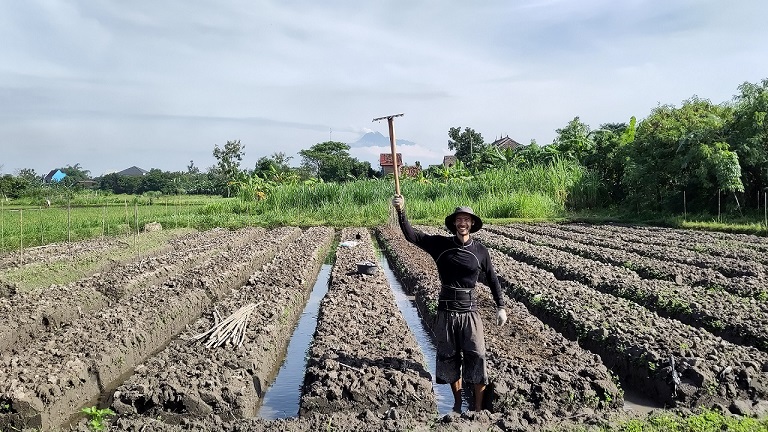Indonesia – Ongoing
REGEN
Farmland Restoration
October 2022 – September 2028
- Preserving agricultural land for future generations
- Climate action: GHG reduction & Carbon storage
- Ecological restoration: Soil regeneration

Indonesia – Ongoing
Ecotica On Tour
Project started in March 2022
Indonesia is Ecotica’s choice for our future pilot project so we made sure to allocate time to survey what is being done already. We arrange those visits to be useful to both Ecotica and the selected location. It is a two-way exchange of information where both parties can share their own experiences, ideas, knowledge and research results. Ecotica’s code of conduct is to share all our knowledge in a transparent way at no cost.
What we generally discuss when visiting a new location :
- Integration
- Scientific Processes
- Alternative and Novel Technologies
- Scaling Potential and Limitations
- SOP (Standard Operating Procedures) Implementation
- Challenges Encountered
Check out our blog or social media for a closer look at our journey
Indonesia - Coming soon
Ecotica's Pilot Project
Description in a nutshell:
Imagine a place on earth where the land is vast enough to host an elaborate ecosystem. A singular place that has reach a resilient equilibrium. Where humans and nature live in balance.
How is this place connected with the rest of the world?
What is considered as organic waste outside, is considered as precious organic matter inside and fuels a complex system. Food products are abundant on site and provide sustenance for the communities outside.
What does this place look like?
An area of several hectares where many species brought together form a sustainable agroecosystem.
You can see trees reaching for the skies, some bearing fruits, some acting as windbreakers, others preventing soil erosion and so much more.
You may notice fast growing tall grasses, a relish for hungry goats and sheep which have an important role to play as ruminants.
You might want to stop for a while to pick up some vegetables and other fruits in polycrop plantations.
What you hear is probably the clucking, cackling or other chicken noises in the soundscape.
Their neighbors are much quieter because catfishes and tilapias can only be heard during the excitement of feeding time.
Other residents don’t like to be exposed to sunlight so you need to visit them indoor and observe their underground activities, feeding on organic matter or moving about in the soil. Such is the life of earthworms and insect larvae.
While bees buzz from one flower to another, butterflies flap their wings. When night falls bats take to the sky to feast on nocturnal pollinators.
Most species that you have encountered so far fulfill obvious ecosystemic functions in the area. But do take some time to observe species that you may not have encountered yet. Indeed, these other plants, insects, amphibians, reptiles and other life forms are refugees that were pushed away from their vanishing homes.
This sneak peek into the pilot project doesn’t account for all the complex and intertwined relationships of so many species living together. If it were to be summed up, you could say that they all complement each other. It creates a synergy, meaning that overall the system is more productive. At the same time, a varied biodiversity ensures that no single species can take over and push the system out of balance.
